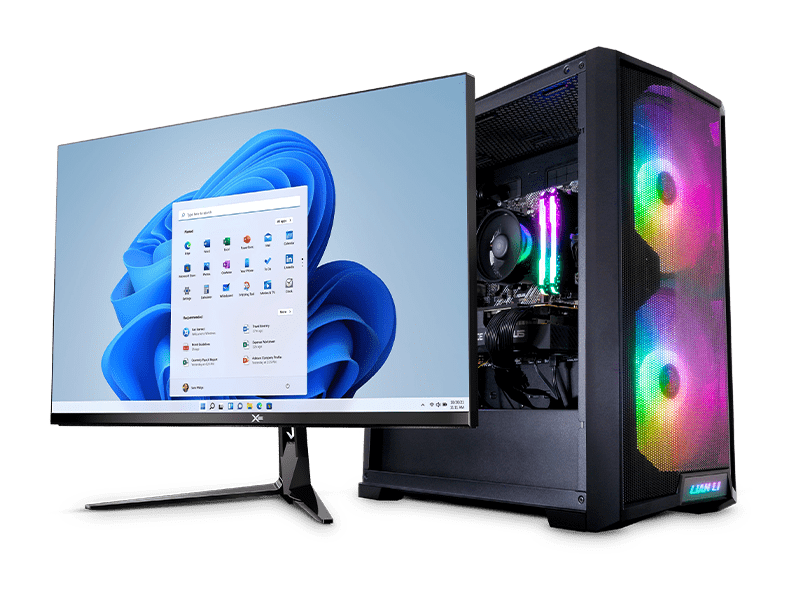SSDs (Solid State Drives) are akin to rocket fuel. They speed up your system in ways that traditional HDDs (Hard Disk Drives) can only dream of. But what if you could double or even triple that speed and efficiency? Welcome to the world of multiple SSDs in your PC—a game-changer for gamers, professionals, and tech enthusiasts alike.
Why Go for Multiple SSDs?
First off, let’s talk about why you’d want to unleash the power of multiple SSDs. Think of your PC as a high-speed train. A single SSD is like a fast engine, but multiple SSDs are like a fleet of engines powering your train to lightning speeds. Here are some compelling reasons to consider:
- Enhanced Performance: SSDs significantly reduce load times and speed up file access. With multiple SSDs, you can distribute the workload, resulting in even quicker performance. Imagine loading your favorite game in the blink of an eye, or handling large video files with ease.
- Increased Storage Capacity: Combining multiple SSDs can give you a larger total storage space, perfect for storing all your games, media, and important files without breaking a sweat.
- Improved Data Organization: Separating your operating system, applications, and data across different SSDs can help keep your system organized and make backups easier.
- Redundancy and Reliability: Some configurations offer RAID setups (more on this later) that can protect your data by mirroring it across drives or improving error correction.
Preparing for the SSD Setup
Before diving into the nuts and bolts of installation, let’s make sure you’re ready for this tech adventure:
- Check Compatibility: Ensure your motherboard supports multiple SSDs. Most modern motherboards do, but it’s always good to verify. Look for available SATA ports (for SATA SSDs) or M.2 slots (for NVMe SSDs).
- Gather Your Tools: You’ll need a screwdriver (to open your PC case), anti-static wristband (to avoid static discharge), and your collection of SSDs. And, if you’re feeling particularly adventurous, a cup of coffee to fuel your inner tech wizard.
- Backup Your Data: As always, backup important data before making hardware changes. It’s like putting on a seatbelt—better safe than sorry.
Step-by-Step Guide to Setting Up Multiple SSDs
1. Power Down and Open Your PC Case
Turn off your PC and unplug it from the wall. Open the case by removing the screws or latches that secure the side panel. If you’re not familiar with your case, consult the manual. This is your PC’s “front door,” so don’t worry; you’re not breaking and entering.
2. Install the SSDs
SATA SSDs
- Locate the Drive Bays: Find the 2.5-inch or 3.5-inch drive bays where your SSDs will fit.
- Mount the SSDs: For 2.5-inch SSDs, use the provided brackets or mounts to fit them into the drive bay. Secure them with screws if needed.
- Connect the Cables: Plug in the SATA power and data cables from your power supply and motherboard into the SSDs. It’s like a game of “Connect the Dots,” but with cables.
M.2 SSDs
- Find the M.2 Slot: Locate the M.2 slot on your motherboard. It’s usually situated near the CPU and may be covered by a heatsink.
- Insert the SSD: Align the SSD with the slot and gently insert it at an angle. Press it down until it clicks into place.
- Secure with Screw: Fasten the SSD with the small screw provided, if required. This keeps your SSD snug and secure.
3. Connect the Cables
For SATA SSDs, you need to connect two cables for each drive: the SATA power cable from the PSU and the SATA data cable from the motherboard. For M.2 SSDs, no cables are needed—just the SSD itself and the motherboard slot.
4. Boot Up and Configure Your Drives
- Power On Your PC: Plug your PC back in and turn it on. Enter BIOS/UEFI settings by pressing the appropriate key during startup (usually F2, DEL, or ESC). Check if your system recognizes all SSDs.
- Initialize and Format the Drives: Once in Windows, open Disk Management (right-click the Start button and select it). You’ll need to initialize and format your new SSDs if they are not already formatted.
- Right-click on the unallocated space of your new SSD.
- Choose “Initialize Disk” and select the partition style (MBR or GPT).
- After initialization, right-click again and select “New Simple Volume” to format and assign a drive letter.
5. Set Up RAID (Optional)
If you’re feeling fancy and your motherboard supports RAID (Redundant Array of Independent Disks), you can configure your SSDs in RAID for added performance or redundancy.
- Enter RAID Configuration: Access the RAID configuration utility from your motherboard’s BIOS/UEFI settings.
- Create a RAID Array: Choose the RAID level that suits your needs (RAID 0 for speed, RAID 1 for mirroring, or others). Follow the on-screen instructions to set it up.
6. Reinstall or Migrate Your Operating System (Optional)
To get the most out of your new SSD setup, you might want to reinstall your OS on a fresh SSD or migrate your existing OS. Tools like EaseUS Todo Backup or Acronis True Image can help you clone your system drive to a new SSD.
Enjoy Your Turbocharged PC
Congratulations, you’re now the proud owner of a multi-SSD PC! You’ve unlocked faster load times, enhanced data management, and perhaps even a touch of tech wizardry. Enjoy the lightning-fast performance and brag about your tech prowess to friends and family. Just remember: with great power comes great responsibility—don’t forget to back up your data!
And there you have it—a complete guide to setting up multiple SSDs in your PC. Now, go forth and experience a new realm of computing speed. Your future self will thank you.





